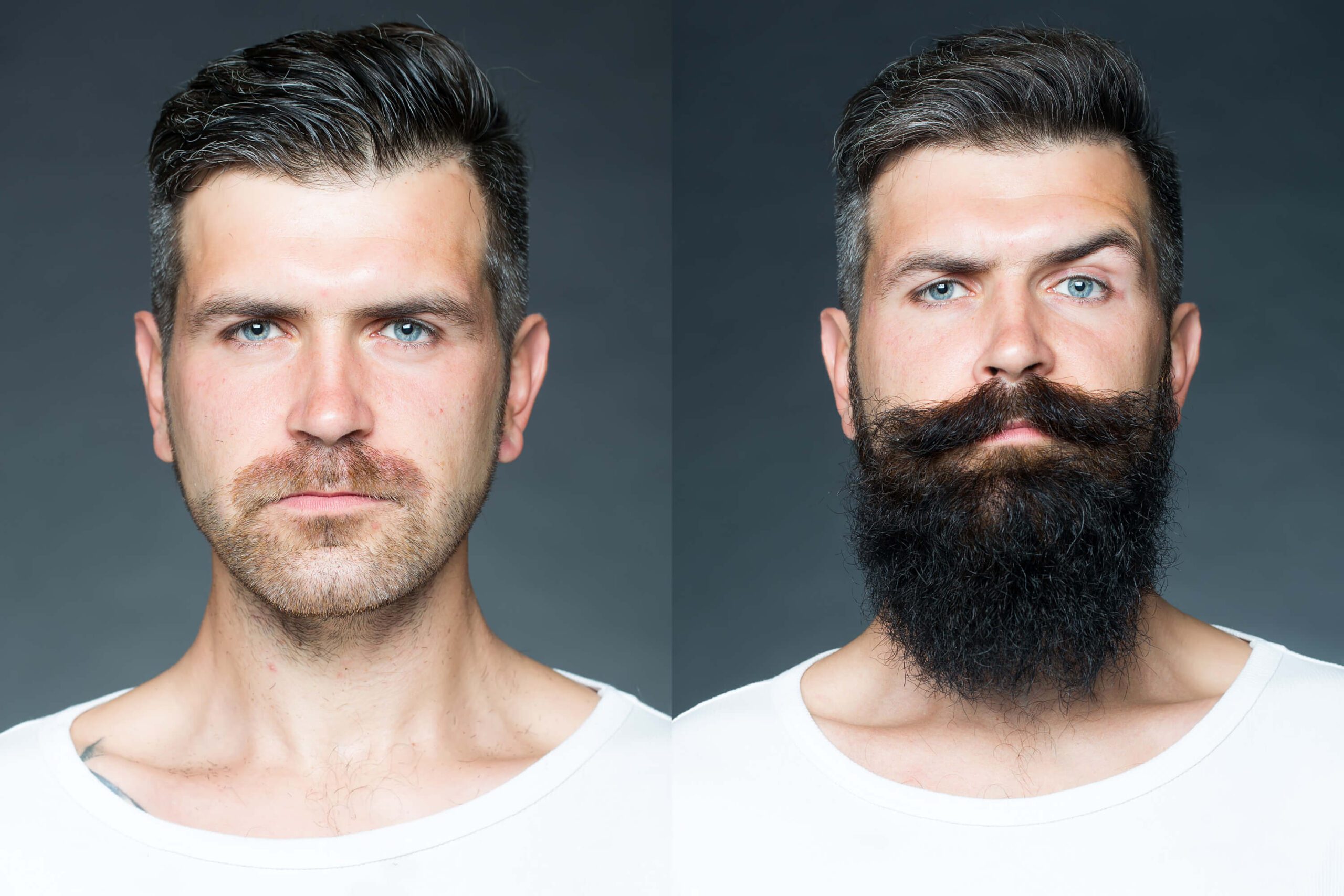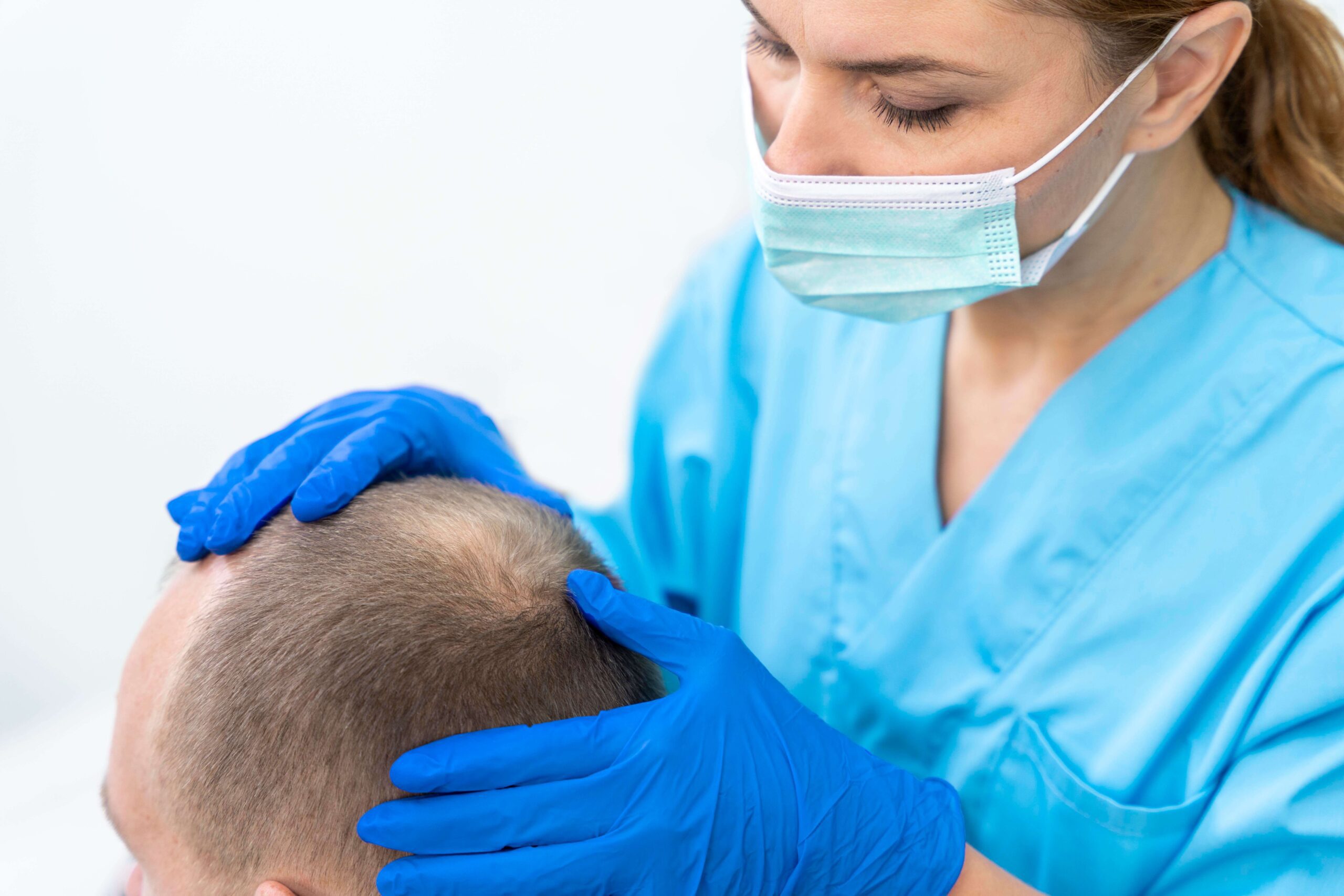
Hair transplant is a common solution for hair loss problems. This article aims to answer the most common questions regarding hair transplantation. Remember, for a personalized consultation to find the best clinic for your hair loss problems, consult with the professionals at TopHairLossClinic.
What is a Hair Transplant?
A hair transplant is a surgical procedure that involves moving hair follicles from one part of your body, typically the sides or back of your scalp, to the balding or thinning areas.
How Does a Hair Transplant Work?
Hair transplants work by exploiting the fact that not all hair follicles are susceptible to hair loss. By transplanting these resistant follicles to areas of the scalp with hair loss, the goal is to promote new growth in those areas.
How Long Does a Hair Transplant Last?
A hair transplant procedure’s longevity depends on various factors. However, most people find that transplanted hairs typically last a lifetime. This is because the hair follicles moved to the thinning or balding areas are genetically resistant to baldness.
Is Hair Transplant Painful?
A hair transplant procedure is typically performed under local anaesthesia, so you should not feel any pain during the operation. Some discomfort might be experienced during the recovery process, but this can be managed with over-the-counter pain medications.
Are Hair Transplants Safe?
Hair transplants are considered safe when performed by a qualified and experienced surgeon. However, like any surgery, there are potential risks. Consulting with experts at TopHairLossClinic will ensure you are connected with reputable clinics that prioritize patient safety.
When Will I See the Results of My Hair Transplant?
It can take between 6 to 12 months for the transplanted hair to fully grow in. Patience is key in observing the final results of your hair transplant.
Why is hair transplant popular in Turkey?
Hair transplantation is popular in Turkey primarily due to the lower cost compared to other countries, combined with the high quality of medical services. Turkish clinics are well-known for their all-inclusive package deals including accommodation, airport transfers, and post-op care also attract patients worldwide.
Which hair transplant method is considered the best?
The effectiveness of a hair transplant can vary depending on individual needs and circumstances. However, Direct Hair Implantation (DHI) or Direct FUE, renowned for its less invasive approach and quicker healing time, is often considered superior by many professionals. Still, it’s critical to consult with a qualified hair restoration expert to choose the method best suited for your specific condition.
Does Hair Transplant Work for Everyone?
No, a hair transplant isn’t a suitable solution for everyone. Its success largely depends on factors like the cause and extent of hair loss, the individual’s general health, and the quality of their donor’s hair. For best results, candidates should have sufficient healthy hair at the back of their scalp to transplant to balding areas. Always consult with a qualified professional to evaluate your personal circumstances.
What is the optimal time to have a hair transplant?
The best time for a hair transplant is a personal decision, typically driven by the extent of hair loss and the person’s readiness for the procedure. However, experts often suggest considering a transplant once noticeable hair thinning or loss occurs and other non-surgical treatments have proven ineffective. Always consult a hair restoration specialist to determine the right timing for your individual needs.
Is a hair transplant permanent?
Yes, a hair transplant is generally considered permanent. The procedure involves transferring hair follicles from a donor area (typically the back or side of the head) to a bald or thinning area. These transplanted hair follicles, once settled, continue to grow hair naturally. However, it’s important to note that a hair transplant does not prevent new hair loss from occurring in non-transplanted areas, so additional treatments or procedures may be needed over time.
Can I make my forehead smaller with a hair transplant?
Yes, you can effectively reduce the perceived size of your forehead with a hair transplant. This procedure, known as hairline lowering or forehead reduction, involves transplanting hair to the forehead to create a lower hairline. However, it’s important to consult with a qualified surgeon to understand the risks and whether you are a suitable candidate for this procedure.
Can Women Have Hair Transplants?
Absolutely, women can undergo hair transplant procedures. This method is a viable solution for women experiencing significant hair loss or thinning. However, it’s important to consult with a professional to assess individual cases and ensure the best possible outcomes.
What is an eyebrow hair transplant?
An eyebrow hair transplant is a medical procedure where individual hair follicles are surgically moved from one area of the body (usually the scalp) to the eyebrows. This procedure is commonly performed on people who have thin or missing eyebrow hair due to genetic factors, overplucking, illness, or trauma. It’s a highly precise operation done under local anaesthesia, aiming to improve the thickness and shape of the eyebrows while maintaining a natural look.
What is a beard hair transplant?
A beard hair transplant is a surgical procedure aimed at enhancing the density and fullness of a beard. It involves harvesting hair follicles from a donor area, often the back of the scalp, and grafting them onto the desired facial areas. The transplanted hair grows like normal facial hair, improving the overall look of the beard.

How long after a hair transplant can you expose your scalp to the sun?
It’s generally advised to wait at least two weeks post-hair transplant before exposing your scalp to direct sunlight. After that period, it’s still crucial to protect the transplant area with a hat or sunscreen, as excessive sun exposure can damage the new grafts and impede healing. Always consult with your surgeon for personalized advice.
Can I combine Scalp Micropigmentation (SMP) and a hair transplant?
Yes, you can combine Scalp Micropigmentation (SMP) and a hair transplant. These two treatments can complement each other, with the hair transplant providing actual hair growth and SMP enhancing the appearance of density and fullness. However, the timing, sequence, and suitability of combining the two treatments can depend on individual cases. Consulting with a professional is crucial to assess personal circumstances and determine the best approach.
Is it better to shave one’s head or get a hair transplant?
The decision to either shave your head or get a hair transplant is personal, depending on factors like the severity of hair loss, self-confidence, financial capability, and tolerance for surgical procedures. If you’re comfortable with the bald look and it suits your personality, shaving could be a great option. If not, and you have the resources for a transplant, it can offer a more permanent solution. It’s important to consult with a healthcare professional or a trichologist to get personalized advice.
Can a hair transplant go wrong?
A hair transplant procedure can indeed go wrong if not performed carefully and by experienced professionals. One of the signs of a hair transplant gone wrong is the overharvesting of the donor areas, which are the hair at the back and sides of the scalp. This can result in thinning, bald patches, and unsightly scars. To avoid such complications, selecting the right clinic, choosing an experienced and skilled doctor, and ensuring the use of appropriate techniques are crucial factors. A well-informed decision and proper expertise can significantly minimize the risk of undesirable outcomes and lead to successful hair restoration.
Under what circumstances is a hair transplant not possible?
Hair transplant procedures may not be suitable for individuals with conditions like Diffuse Unpatterned Alopecia (DUPA) or Alopecia Areata. DUPA is a type of hair loss that involves a lack of a stable donor site for hair transplantation, while Alopecia Areata, an autoimmune disorder often characterized by coin-sized bald patches on the scalp, can cause unpredictable hair loss in various parts of the body. Therefore, these conditions make hair transplant techniques largely unfeasible or ineffective.
Conclusion
A hair transplant is a significant decision, and it’s important to understand what the procedure involves, how it works, and what to expect during the recovery period. Remember, always seek professional advice to ensure you are making the best decision for your individual circumstances.
If you are experiencing hair loss or looking for the best hair transplant clinic, don’t hesitate to reach out to the experts at TopHairLossClinic. They’re here to help and provide the expertise you need.


